The Train is a 1965 American drama film directed by John Frankenheimer. Its screenplay—written by Franklin Coen, Frank Davis, and Walter Bernstein—is loosely based on the non-fiction book Le front de l'art by Rose Valland, who documented the works of art placed in storage that had been looted by the Germans from museums and private art collections. Arthur Penn was The Train's original director, but was replaced by Frankenheimer three days after filming had begun.
| The Train | |
|---|---|
Theatrical release poster by Frank McCarthy | |
| Directed by | John Frankenheimer Arthur Penn |
| Produced by | Jules Bricken |
| Written by | Franklin Coen Frank Davis Walter Bernstein |
| Starring | Burt Lancaster Paul Scofield Jeanne Moreau Michel Simon |
| Music by | Maurice Jarre |
| Cinematography | Jean Tournier Walter Wottitz |
| Edited by | David Bretherton |
Production companies | Les Productions Artistes Associés Les Films Ariane Dear Film |
| Distributed by | United Artists |
Release date | March 17, 1965 (United States) |
Running time | 133 minutes |
| Country | United States |
| Language | English |
| Budget | $5.8 million |
| Box office | $6.8 million |
The film stars Burt Lancaster, Paul Scofield and Jeanne Moreau. Set in August 1944, it sets French Resistance-member Paul Labiche (Lancaster) against German Colonel Franz von Waldheim (Scofield), who is attempting to move stolen art masterpieces by train to Germany. Inspiration for the scenes of the train's interception came from the real-life events surrounding train No. 40,044 as it was seized and examined by Lt. Alexandre Rosenberg of the Free French forces outside Paris.
Screenplay
In 1944, masterpieces of modern art stolen by the Wehrmacht are being shipped to Germany; the officer in charge of the operation, Colonel Franz von Waldheim, is determined to take the paintings to Germany, no matter the cost. After the works chosen by Waldheim are removed from the Jeu de Paume Museum, curator Mademoiselle Villard seeks help from the French Resistance. Given the imminent liberation of Paris by the Allies, they need only delay the train for a few days, but it is a dangerous operation and must be done in a way that does not risk damaging the priceless cargo.
Resistance cell leader and SNCF area inspector Paul Labiche initially rejects the plan, telling Mlle. Villard and senior Resistance leader Spinet, "I won't waste lives on paintings"; but he has a change of heart after a cantankerous elderly engineer, Papa Boule, is executed for trying to sabotage the train on his own. After that sacrifice, Labiche joins his Resistance teammates Didont and Pesquet, who have been organizing their own plan to stop the train with the help of other SNCF Resistance members. They devise an elaborate ruse to reroute the train, temporarily changing railway station signage to make it appear to the German escort as if they are heading to Germany when they have actually turned back toward Paris. They then arrange a double collision in the small town of Rive-Reine that will block the train without risking the cargo. Labiche, although shot in the leg, escapes on foot with the help of the widowed owner of a Rive-Reine hotel, Christine, while other Resistance members involved in the plot are executed.
The night after the collision, Labiche and Didont meet Spinet again, along with young Robert (the nephew of Jacques, the executed Rive-Reine station master) and plan to paint the tops of three wagons white to warn off Allied aircraft from bombing the art train. Robert recruits railroad workers and friends of his Uncle Jacques from nearby Montmirail, but the marking attempt is discovered, and Robert and Didont are both killed.
Now working alone, Labiche continues to delay the train after the tracks are cleared, to the mounting rage of von Waldheim. Finally, Labiche manages to derail the train without endangering civilian hostages that the colonel has placed on the locomotive to prevent it being blown up. Von Waldheim flags down a retreating army convoy and learns that a French armoured division is not far behind. The colonel orders the train unloaded and attempts to commandeer the trucks, but the officer in charge refuses to obey his orders. The train's small German contingent kills the hostages and joins the retreating convoy.
Von Waldheim remains behind with the abandoned train. Crates are strewn everywhere between the tracks and the road, labelled with the names of famous artists. Labiche appears and the colonel castigates him for having no real interest in the art he has saved:
Does it please you, Labiche? You feel a sense of excitement at just being near them? A painting means as much to you as a string of pearls to an ape. You won by sheer luck. You stopped me without knowing what you were doing or why.... The paintings are mine. They always will be. Beauty belongs to the man who can appreciate it. They will always belong to me, or a man like me. Now, this minute, you couldn't tell me why you did what you did.
In response, Labiche turns and looks at the murdered hostages. Then, without a word, he turns back to von Waldheim and shoots him. Afterwards he limps away, leaving the corpses and the art treasures where they lie.
Sourced to the American Film Institute.
- Burt Lancaster as Labiche
- Paul Scofield as Colonel von Waldheim
- Jeanne Moreau as Christine
- Suzanne Flon as Miss Villard
- Michel Simon as Papa Boule
- Wolfgang Preiss as Major Herren
- Albert Rémy as Didont
- Charles Millot as Pesquet
- Jean Bouchard as Hauptmann Schmidt
- Richard Münch as General von Lubitz
- Jacques Marin as Jacques
- Paul Bonifas as Spinet
- Donald O'Brien as Sergeant Schwartz
- Arthur Brauss as Leutnant Pilzer
- Bernard La Jarrige as Bernard
- Daniel Lecourtois as Priest
- Gérard Buhr as Corporal
- Howard Vernon as Hauptmann Dietrich
- Nick Dimitri as German soldier
- Christian Fuin as Robert
- Christian Rémy as Tauber
- Helmo Kindermann as Ordnance officer
- Jacques Blot as Hubert
- Jean-Claude Bercq as Major
- Jean-Jacques Lecomte as Lieutenant of retreating convoy
- Jean-Pierre Zola as Octave
- Louis Falavigna as Railroad worker
- Max From as Gestapo officer
- Richard Bailey as Grote
- Roger Lumont as Engineer officer
The Train is based on the factual 1961 book Le front de l'art by Rose Valland, the art historian at the Galerie nationale du Jeu de Paume, who documented the works of art placed in storage there that had been looted by the Germans from museums and private art collections throughout France and were being sorted for shipment to Germany in World War II.
In contrast to the action and drama depicted in the film, the shipment of art that the Germans were attempting to take out of Paris on August 1, 1944, was held up by the French Resistance with an endless barrage of paperwork and red tape and made it no farther than a railyard a few miles outside Paris.
The train's actual interception was inspired by the real-life events surrounding train No. 40,044 as it was seized and examined by Lt. Alexandre Rosenberg of the Free French forces outside Paris in August 1944. Upon his soldiers opening the wagon doors he viewed many plundered pieces of art that had once been displayed in the home of his father, Parisian art dealer Paul Rosenberg, one of the world's major Modern art dealers.
John Frankenheimer took over the film from another director, Arthur Penn. Burt Lancaster had Penn fired after three days of filming in France, and called in Frankenheimer to take over. Penn envisioned a more intimate film that would muse on the role art played in Lancaster's character, and why he would risk his life to save the country's great art from the Nazis. He did not intend to give much focus to the mechanics of the train operation itself. But Lancaster wanted more emphasis on action to ensure that the film would be a hit, after the failure of his film The Leopard. The production was shut down briefly while the script was rewritten, and the budget doubled. As he recounts in the Champlin book, Frankenheimer used the production's desperation to his advantage in negotiations. He demanded and got the following: his name was made part of the title, "John Frankenheimer's The Train"; the French co-director, demanded by French tax laws, was not allowed to ever set foot on set; he was given total final cut; and a Ferrari. Much of the film was shot on location.
The Train contains multiple real train wrecks. The Allied bombing of a rail yard was accomplished with real dynamite, as the French rail authority needed to enlarge the track gauge. This can be observed by the shockwaves travelling through the ground during the action sequence. Producers realized after filming that the story needed another action scene, and reassembled some of the cast for a Spitfire attack scene that was inserted into the first third of the film. French Armée de l'Air Douglas A-26 Invaders are also seen later in the film.
The film includes a number of sequences involving long tracking shots and wide-angle lenses, with both foreground and background action in focus. Noteworthy tracking shots include:
- Labiche attempting to flag down a train, then sliding down a ladder, running along the tracks and jumping onto the moving locomotive—performed by Lancaster himself, not a stunt double;
- A scene in which the camera wanders around Nazi offices that are hastily being cleared, eventually focusing on von Waldheim and following him back through the office;
- A long dolly shot of von Waldheim travelling through a marshalling yard at high speed in a motorcycle sidecar;
- Labiche rolling down a mountain and across a road, and staggering down to the track. Frankenheimer noted on his DVD commentary that Lancaster performed the entire roll down the mountain himself, filmed by cameras at points along the hillside.
During an interview with the History Channel, Frankenheimer revealed:
- The marshalling yard attacked during the Allied bombing raid sequence was demolished by special arrangement with the French railway, which had been looking to do it but had lacked funding.
- The sequence in which Labiche is shot and wounded by German soldiers while fleeing across a pedestrian bridge was necessitated by a knee injury Lancaster suffered during filming - he stepped in a hole while playing golf, spraining his knee so severely that he could not walk without limping.
- When told that Michel Simon would be unable to complete scenes scripted for his character as a result of prior contractual obligations, Frankenheimer devised the sequence wherein Papa Boule is executed by the Germans. Jacques Marin's character was killed for similar reasons.
- Colonel von Waldheim (Paul Scofield) is told, at the scene of the last major train wreck, by Major Herren (Wolfgang Preiss), "This is a hell of a mess you've got here, Colonel." This line became a metaphor for complicating disasters on Frankenheimer films thereafter.
- Colonel von Waldheim was originally to engage Labiche in a shootout at the film's climax, but after Paul Scofield was cast in the role, at Lancaster's suggestion Frankenheimer re-wrote the scene to provide Scofield a more suitable end—taunting Labiche into killing him.
Frankenheimer remarked on the DVD commentary, "Incidentally, I think this is the last big action picture ever made in black and white, and personally I am so grateful that it is in black and white. I think the black and white adds tremendously to the movie."
Throughout the film, Frankenheimer often juxtaposed the value of art with the value of human life. A brief montage ends the film, intercutting the crates full of paintings with the bloodied bodies of the hostages, before a final shot shows Labiche walking away.
Locations
Filming took place in several locations, including: Acquigny, Calvados; Saint-Ouen, Seine-Saint-Denis; and Vaires, Seine-et-Marne. The shots span from Paris to Metz. Much of the film is centered in the fictional town called "Rive-Reine."
The circular journey
Actual train route: Paris, Vaires, Rive-Reine, Montmirail, Chalon-S-Marne, St Menehould, Verdun, Metz, Pont-à-Mousson, Sorcy (Level Crossing), Commercy, Vitry Le Francois, Rive-Reine.
Planned route from Metz to Germany: Remilly, Teting (Level Crossing), St Avold, Zweibrücken.
Locomotives used
The locomotives used were the former Chemins de fer de l'Est Series 11s 4-6-0s, which the SNCF classified as 1-230.B. Identifiable locomotives include 1-230.B.739 with tender 22.A.739, 1-230.B.616, and 1-230.B.855 with tender 22.A.886; Papa Boule's locomotive is 1-230.B.517; and SNCF Class 030TUs can be seen in background shots. In the crash scene, an ancient "Bourbonnais" type 030.
Watch movie The Train 1964 Film online on Amazon
Watch movie The Train 1964 Film online
Watch The Movie On PrimeSalakhen (1975) Full HD Movie Download
.jpg)
Abdullah Full HD Movie Download
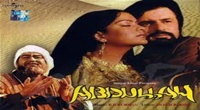
Patita Full HD Movie Download
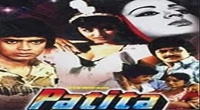
Devta Full HD Movie Download
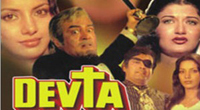
Aakhri Dao (1975) Full HD Movie Download
.jpg)
Baarish (1957) Full HD Movie Download
.jpg)
Khazana (1987) Full HD Movie Download
.jpg)
Teri Talash Mein (1990) Full HD Movie Download
.jpg)
Chanda Aur Bijali Full HD Movie Download

Bhagawan Shree Krishna Full HD Movie Download
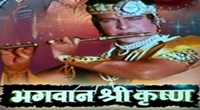
Veerabaahu Full HD Movie Download
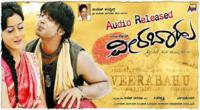
Hitler and the Nazis Part 1 Full HD Movie Download
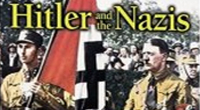
The Exorcist Full HD Movie Download
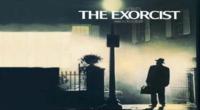
Samurai Full HD Movie Download

Jai Santoshi Mata Full HD Movie Download

Police Ante Veederaa Full HD Movie Download
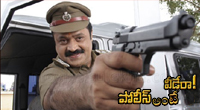
Shankaravam Full HD Movie Download
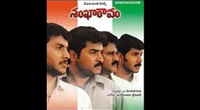
Kamalamma Kamatham Full HD Movie Download
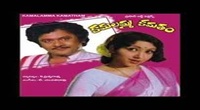
Maa Intayana katha Full HD Movie Download
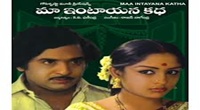
Marana Homam Full HD Movie Download
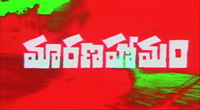
Dil To Pagal Hai Full HD Movie Download

Download latest Movie from bollywood
- 1> baaghi 3
- 2> THE SKY IS PINK MOVIE FULL STORY AND REVIEW
- 3> Luka Chuppi
- 4> TO ALL THE BOYS I’VE LOVED BEFORE
- 5> Kabir Singh
- 6> Street Dancer 3D
- 7> Simmba
- 8> Gone Girl
- 9> The Girl Who Lived
- 10> Ludo
- 11> DILWALE DULHANIA LE JAYENGE
- 12> GUILTY
- 13> The Godfather
- 14> Adventures of Rusty
- 15> Sooryavanshi
- 16> Satyameva Jayate 2
- 17> Thappad
- 18> Bhool Bhulaiyaa 2
- 19> KGFChapter 2
- 20> Mardaani 2
- 21> Pinjar
- 22> Shivaji maharaj
- 23> Ek Villian 2
- 24> Hungama 2
- 25> Divergent
- 26> Mumbai Saga
- 27> The Internship
- 28> HIT (telugu)
- 29> Panga
- 30> The perfect date
- 31> 16 December
- 32> Gopala Gopala (Telugu)
- 33> Brahmastra
- 34> Gangubai Kathiawadi
- 35> Manmadhudu
- 36> Nenu local
- 37> Mahanati
- 38> Shatamanam bavathi
- 39> Lagaan
- 40> After
- 41> MOM
- 42> Shamshera
- 43> Raguvaran BTech
- 44> Khakee
- 45> The villain
- 46> OM
- 47> Mr. perfect
- 48> Bueatifull mind
- 49> Hichki
- 50> Gabbar Singh
- 51> Jogi
- 52> Before Sunrise
- 53> Before Sunset
- 54> Before Midnight
- 55> The Big Bull
- 56> Top Gun: Maverick
- 57> The Purge
- 58> The Sky is Pink
- 59> Laxmmi Bomb
- 60> Sadak 2
- 61> Sufna
- 62> Prithviraj
- 63> PK
- 64> Coolie No 1(2020)
- 65> Black Widow
- 66> Dear Zindagi
- 67> Dil Bechara
- 68> PHIR HERA PHERI
- 69> WAR
- 70> Dostana
- 71> RRR: Roudram Ranam Rudhiram
- 72> Maidan
- 73> Dabbang 3
- 74> Chhalaang
- 75> life as we know it
- 76> SherShaah
- 77> Sandeep Aur Pinky Faraar
- 78> Event Horizon
- 79> 83
- 80> Radhe: Your Most Wanted Bhai
- 81> Gunjan Saxena: The Kargil Girl
- 82> Mr India
- 83> Vivah
- 84> Anokha Bandhan
- 85> Ghost
- 86> Bhoot: Part One - The Haunted Ship
- 87> Haseen Dilruba
- 88> Laal Singh Chaddha
- 89> Qismat
- 90> Rajput
- 91> Drive
- 92> Dil Chahta Hai
- 93> Dil Ki Baazi
- 94> Dil Ka Rishta
- 95> Teesri Manzil
- 96> Dil
- 97> Love Aaj Kal
- 98> Khaali Peeli
- 99> Bunty Aur Babli 2
- 100> Atrangi Re
- 101> Gulabo Sitabo
- 102> Jodi
- 103> Suraj Pe Mangal Bhari
- 104> Deewana
- 105> Attack
- 106> Sardar Udham Singh
- 107> Toofan
- 108> THE LOVEBIRDS
- 109> Jersey
- 110> Ginny Weds Sunny
- 111> Thalaivi
- 112> Shiddat
- 113> Angels vs Zombies
- 114> Koi Mil Gya
- 115> Thank God
- 116> Bhuj: The Pride of India
- 117> Hum Aapke Hain Kaun
- 118> The Platform
- 119> Bird Box
- 120> Roohi Afzana
- 121> Torbaaz
- 122> Nikamma
- 123> World War Z
- 124> Extraction
- 125> Train to Busan
- 126> Life of Pi
- 127> SHAADI MEIN JROOR AANA
- 128> Himmat Aur Mehnat
- 129> To All The Boys: P.S. I Still Love You
- 130> Mimi
- 131> Good Newwz
- 132> Shubh Mangal Zyada Saavdhan
- 133> Raabta
- 134> Harry Potter and the Philosopher's Stone
- 135> Harry Potter and the Chamber of Secrets
- 136> Chhapaak
- 137> War of the Worlds
- 138> Harry Potter and the Prisoner of Azkaban
- 139> Harry Potter and the Goblet of Fire
- 140> MURDER MYSTERY
- 141> Shakuntala Devi
- 142> Bachchan Pandey
- 143> Jayeshbhai Jordar
- 144> Sheer Qorma
- 145> Saina
- 146> 'O' Pushpa I hate tears
- 147> Kedarnath
- 148> MS Dhoni The Untold Story
- 149> Chhichhore
- 150> Badhaai Ho
- 151> Unstoppable
- 152> Oz the Great And Powerful
- 153> The Girl on the Train
- 154> Haathi Mere Saathi 2020
- 155> The Conjuring: The Devil Made Me Do It
- 156> Gandhi Se Pehle Gandhi
- 157> The Song of Scorpions
- 158> Srimanthudu
- 159> Hello Guru Prema Kosame
- 160> Beauty and The Beast
- 161> Black Panther
- 162> Charlie and the Chocolate Factory
- 163> Bole Chudiyan
- 164> Fidaa
- 165> Duvvada Jagannadham
- 166> Bruce Lee: The Fighter
- 167> Hyper
- 168> Yaara
- 169> Red (2020)
- 170> Shivam
- 171> That Is Mahalakshmi
- 172> Nishabdham
- 173> Aashram 2020 web series
- 174> Laxmii
- 175> Mismatched
- 176> STUDENT OF THE YEAR 2
- 177> NAIL POLISH
- 178> Ramprasad Ki Tehrvi
- 179> KAAGAZ
- 180> 12 o Clock
- 181> The Power
- 182> bolo hau
- 183> Tribhanga
- 184> JAMUN
- 185> Madam Chief Minister
- 186> Maasaab
- 187> Aadhaar
- 188> Tanhaji
- 189> Bhaagi 3
- 190> Bhootnath
- 191> MALANG
- 192> Jai Mummy Di
- 193> Haathi Mere Saathi 2021
- 194> Shakeela
- 195> Unpaused
- 196> Annayya
- 197> Vamsoddharakudu
- 198> Mrugaraju
- 199> Narasimha Naidu
- 200> Sankranti
- 201> Manasu Maata Vinadhu
- 202> Anjaane
- 203> Apaharan
- 204> Bachke Rehna Re Baba
- 205> Bewafaa
- 206> Roohi
- 207> Radhe
- 208> Zindagi Khoobsoorat Hai
- 209> Yeh Mohabbat Hai
- 210> Yeh Kya Ho Raha Hai?
- 211> The Tomorrow War
- 212> DehradunDiary
- 213> Meri Shaadi Karaoo
- 214> Matruu Ki Bijlee Ka Mandola
- 215> No One Killed Jesica
- 216> Aag Ka Goola
- 217> Eight Million Dollars
- 218> Three Hundred
- 219> Cats and Dog
- 220> Decoy
- 221> Gold Rush
- 222> You Have Got Mail
- 223> Final Destination three
- 224> Tofan
- 225> Jungle
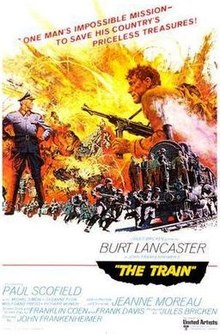 Story of movie The Train 1964 Film :
Story of movie The Train 1964 Film : 